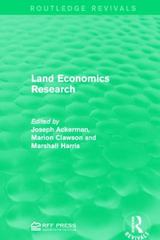(more particularly, Table 9-2) describes the various federal legislation affecting human resources management (National Labor Relations Act, Fair Labor Standards Act, etc.) In recent years, there has been an outcry against government regulation, contending that government regulation is "bad for business." If you were a legislator charged (by your constituents) with the responsibility of deregulating business, which three (3) laws would you repeal, and why?
compiles them into a feedback report for the employee. Companies that significant resources in employee-development efforts are especially likely to use 360-degree evaluations. An employee should not be given a feedback report without first having a one-on-one meeting with his or her supervisor. To ensure Concept Check effective implementation, upper-level management should adopt this approach first and coach managers on how to use the feedback to achieve positive performance What are the main objectives of and behavioral outcomes. performance appraisal? Many managers find it difficult to discuss negative appraisals, leading them to ignore performance feedback. However, it is important for employees to be informed What methods are used? of how they can improve. Employers should emphasize employee strengths when Describe the three approaches to delivering a negative appraisal. Without feedback, an employee may be unaware of performance feedback interviews. his or her weaknesses and they will never be addressed. Only through tactful, honest communication can the results of an appraisal be fully used. 9-9 The Legal Environment of HRM Legislation regarding HRM practices has been passed mainly to protect the rights of LEARNING OBJECTIVE employees, to promote job safety, and to eliminate discrimination in the workplace. 9-9 Outline the major The major federal laws affecting HRM are summarized in Table 9-2. legislation affecting human resources management. TABLE 9-2 Federal Legislation Affecting Human Resources Management Law Purpose National Labor Established a collective-bargaining process in labor-management relations and the National Relations Act (1935) Labor Relations Board (NLRB). Fair Labor Standards Established a minimum wage and an overtime pay rate for employees working more than 40 Act (1938) hours per week. Labor-Management Provides a balance between union power and management power, also known as the Taft- Relations Act (1947) Hartley Act. Equal Pay Act (1963) Specifies that men and women who do equal jobs must be paid the same wage. Title VII of the Civil Prohibits discrimination in employment practices based on sex, race, color, religion, or national Rights Act (1964) origin. Age Discrimination Prohibits personnel practices that discriminate against people aged 40 years and older. The in Employment Act 1986 amendment eliminated a mandatory retirement age: (1967 & 1986 Occupational Safety and Health Act (1970) Regulates the degree to which employees can be exposed to hazardous substances and specifies the safety equipment that the employer must provide. Employment Retirement Income Regulates company retirement programs and provides a federal insurance program for Security Act (1974) retirement plans that go bankrupt. Retraining Notification Worker Adjustment and Requires employers to give employees 60 days' notice regarding plant closure or layoff of 50 or (WARN) Act (1988) more employees Americans with Disabilities Act (1990) Prohibits discrimination against qualified individuals with disabilities in all employment practices, including job-application procedures, hiring, firing, advancement, compensation, Civil Rights Act (1991) training, and other terms, conditions, and privileges of employment. Family and Medical Empowers employees to sue employers for sexual discrimination and collect punitive damages. Leave Act (1993) Requires an organization with 50 or more employees to provide up to 12 weeks of leave without pay on the birth (or adoption) of an employee's child or if an employee or his or her spouse, child, or parent is seriously ill. Affordable Care Act (2010) Requires an organization with 50 or more employees to make health insurance available to employees or pay an assessment and gives employees the right to buy health insurance from another provider if an organization's health insurance is too expensive. Chapter 9 Attracting and Retaining the Best Employees 26







